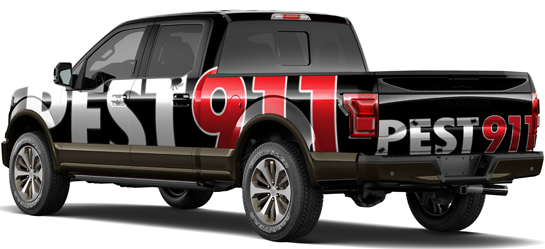How to Get Rid of White Lawn Grubs in Garden Soil in Summerfield, FL; Life Cycle & More
During the springtime, Floridians do what they can for their lawns, building their strength and health to promote excellent growth and progress during the summer months. Protecting the lawn from summer pests is usually one of the priorities. Summer pests that invade lawns can cause the grass’s life to dwindle as pests infest the soil and devour the roots below the surface. Combating the common pests in your lawn is better done by knowing the enemy. Today, we at Pest 911 would like to take the opportunity to discuss the grubs often found in the Florida lawns.
White Grubs in Garden Soil
One type of grub commonly discovered in the turf are white grubs, and they are the Japanese beetle’s larvae. These grubs are white, C-shaped creatures that have legs near their head and have soft bodies. Typically, these grubs feed on the grass’s roots as they live within the soil. The patches of dying grass is often an indication of their feeding. Eventually, the grubs will evolve to into adult beetles, where they emerge from the soil, mate, lay eggs, and more grubs hatch to continue the endless cycle.
White Grub Life Cycle
Spring – Coming from the winter slumber, the grubs awaken to begin feeding the roots of grass and following the feeding frenzy, they morph into pupae, and eventually grow into adult beetles.
Summer – The pupae and adult Japanese beetles will feed on the foliage and flowers found in the garden and by the end summer, will look for favorable areas in the soil to lay their eggs. Approximately 2 weeks at the end of the summer, depending on the surrounding circumstances, the eggs will hatch. The grubs will begin feasting in the early fall immediately after hatching. The new grubs will initially indulge a couple of inches below on the roots, but eventually, they burrow up to 8 inches to get to the roots.
Fall – Before overwintering, the grubs will hatch in the fall and begin to devour the grass’s roots to survive the long winter, where the cycle continues on the endless loop.
Signs of a White Lawn Grub Infestation
Look for brown patches in your lawn to catch grubs in your Florida lawn, the turf will easily lift and roll like carpet to expose a nonexistent root system if the grubs are the culprit. Additionally, being that grubs are delicacy to many predators, you will see birds, raccoons, skunks, and moles in excess congregating in your yard and tearing at the grass.
Grub Control Treatment & Home Remedies
1) Be sure to water after professional pest control treatment. After pest control spraying, watering the lawn will help penetrate it deeper into the soil as the grubs rise to upwards to reach the moisture.
2) Evaluate neighboring lawns. If you think or know neighbors are combating the grubs, get proactive as the emerging beetles will likely migrate into your yard.
3) Dry out lawn areas with white grubs. Grubs need moisture and will be drawn to areas that are consistently moist. Female beetles prefer well-maintained and moistened turf to lay their eggs and hatchlings develop better in ideal environments. To disrupt and slow down the grub’s activities and growth cycles, consider droughts in areas you believe grubs are.
Year Round Pest Control
For the most effective pest control solutions, call in the certified experts of Pest 911 and we will eliminate the grubs and Japanese beetles that are invading your turf.


